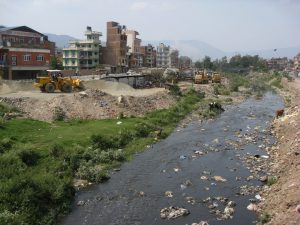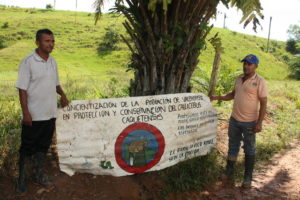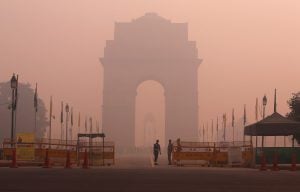India is one of the most vulnerable countries to climate change impacts, according to a risk index released at COP23. The South Asian nation is the 6th most vulnerable nation in a list topped by Haiti – the poorest country in the western hemisphere. The ranks were released by Berlin-based NGO Germanwatch at the global climate summit in Bonn.
The Global Climate Risk Index 2018 examines the extent to which countries have been affected by the impacts of weather-related loss events such as storms, floods and heatwaves. The index looked at the most recent data available – from 2016 – as well as long-term trends — from 1997 to 2016.
The latest analysis reconfirms earlier index results that less developed countries are more affected by climate change than rich nations. The vulnerability of poorer countries is visible in the long-term index — nine of the 10 countries most affected between 1997 and 2016 are developing countries with low or lower middle income per capita.
The index serves as a red flag for existing vulnerabilities that may further increase in regions where extreme events will become more frequent or more severe due to climate change, according to Germanwatch. Some vulnerable developing countries such as India, Pakistan and Bangladesh are frequently hit by extreme events.
Extreme weather
Heatwaves in South Asia persisted until the beginning of summer 2016, breaking a record of 51 degrees Celsius in Rajasthan in May 2016. More than 1,000 people died of hyperthermia or dehydration. In total, 1,8000 fatalities were reported, especially in south-east India.
The persisting drought and heat waves affected more than 330 million people, and were followed by an extreme monsoon season from June to October in eastern, western and central India. At least 300 people died due to the heavy rainfalls and landslides, while millions more were affected by deluged crops, destroyed roads or disrupted electricity and phone lines.
The implications of a changing climate are particularly severe for India. In 2016, the country reported the highest number of deaths due to extreme weather (2,119 fatalities) and suffered losses of more than INR 1.4 trillion (USD 21 billion) in property damage. This is almost 1% of India’s GDP of USD 2.5 trillion, and almost equivalent to the country’s whole health budget.
Germanwatch's index found that, worldwide, 524,000 people lost their lives between 1997 and 2016, with financial losses totalling USD 3.16 trillion as a direct result of more than 11,000 extreme weather events across the two decades.
The risk index report, prepared using reinsurance company Munich Re's NatCatService and socio-economic data from the International Monetary Fund, shows increasing evidence for the link between global warming and extreme El Niño events, which affects the monsoon in India. The occurrence of such events could double in the future due to climate change, the report said.
It remains to be seen how much progress the climate summit in Bonn will make to address these challenges. COP23 aims to write the rulebook needed to implement the Paris Agreement, including the global adaptation goal and adaptation communication guidelines. A new five-year-work plan of the Warsaw International Mechanism on Loss and Damage is likely to be adopted by the summit but it is still uncertain how loss and damage would be taken up under the Paris Agreement.
Also read: Declare climate emergency, say scientists
Also read: India showcases action on electric mobility at global meet
![<p>Under Narendra Modi, there has been a renewed focus on building large dams and diverting rivers [Photo shows the Brahmaptura by: Rita Willaert, CC BY-NC 2.0]</p>](https://dialogue.earth/content/uploads/2017/11/Brahmaputra-river-e1618567774888.jpg)







